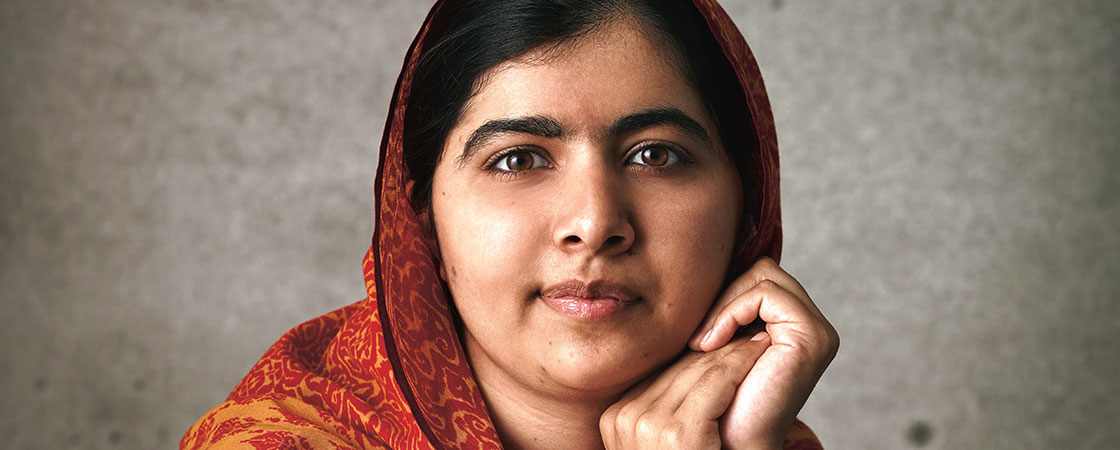October 9, 2012, was a hot afternoon in the Swat Valley, an area in northern Pakistan. In the bustling city of Mingora, Malala Yousafzai [yoo-suf-ZAHY], 15, stepped onto a school bus with her classmates. She was tired after taking a big test earlier that day, but also happy—she was certain she’d done well.
The bus wound its way through the end-of day traffic. As Malala chatted with her best friend, Moniba, the sights and sounds of the city passed by—the busy shops, the ice cream sellers, the honking cars. At one point, a student began singing and everyone joined in.
But then, only a few minutes from Malala’s house, the bus came to a stop and two armed men boarded.
“Who is Malala?” one of the men demanded.
A feeling of terror filled the bus. Malala grabbed Moniba’s hand. And then the unthinkable happened: The gunmen opened fire.
One bullet hit Malala’s head near her left eye. Two of Malala’s friends were struck in their arms. Then the gunmen fled, leaving Malala to die.
It might be difficult to imagine why anyone would attempt to murder an innocent teenager on her way home from school. But to many—including Malala herself—the attack was not a surprise. That’s because Malala was not only a student. She was also a courageous fighter in the struggle to help girls in Pakistan get an education.
This work had made her a hero to many in Pakistan and around the world. It had also put her in grave danger.
It had made her the target of a dangerous terrorist group.
October 9, 2012, was a hot day in the Swat Valley, an area in northern Pakistan. In the city of Mingora, Malala Yousafzai [yoo-suf-ZAHY], 15, got on a school bus with her classmates. She was tired after taking a big test that day, but also happy: She was sure she’d done well.
The bus moved through traffic. As Malala chatted with her best friend, Moniba, the sights and sounds of the city passed by—the busy shops, the ice cream sellers, the honking cars. At one point, a student began singing and everyone joined in.
But then, just minutes from Malala’s house, the bus came to a stop and two armed men got on.
“Who is Malala?” one of the men demanded.
A feeling of terror filled the bus. Malala grabbed Moniba’s hand. And then the unthinkable happened: The gunmen opened fire.
One bullet hit Malala’s head near her left eye. Two of Malala’s friends were struck in their arms. Then the gunmen fled, leaving Malala to die.
It might be hard to imagine why anyone would try to kill an innocent teen on her way home from school. But to many—including Malala herself—the attack was not a surprise. That’s because Malala was not only a student. She was also a fighter in the struggle to help girls in Pakistan get an education.
This work had made her a hero to many in Pakistan and around the world. It had also put her in grave danger.
It had made her the target of a dangerous terrorist group.

